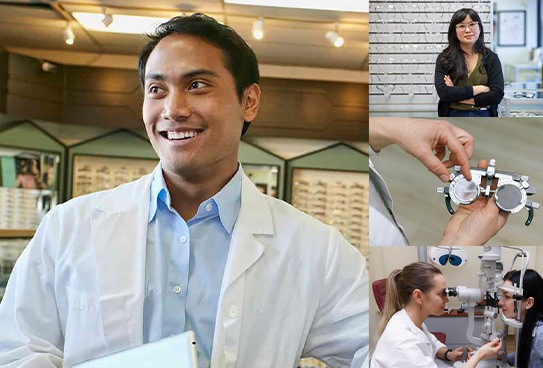Ultraviolet radiation (UV) is an invisible component of sunlight that is most commonly known to cause sunburns and skin cancers. While some UV is filtered by the ozone layer, increasing amounts are reaching the earth as the ozone layer steadily diminishes. Exposure to UV is cumulative and direct contact with sunlight for even short periods of time can lead to several long-term eye health problems – many of which begin symptom-free.
Because children spend more time outdoors than the average adult, they receive approximately three times the annual adult dose of UV. Additionally, because the crystalline lens in children’s eyes has less capability to filter UV than in adult eyes, they are at a greater risk of internal eye damage, including cataracts and macular degeneration, later in life. In fact, the World Health Organization estimates that up to 80 per cent of a person’s lifetime exposure to damaging UV radiation occurs before age 18. Protecting your child now will decrease the potential for serious eye problems later in life. To help reduce UV radiation damage to your child’s eyes, consider the following tips:
- Be conscious of the daily UV index and the many sources of UV radiation, including direct sunlight and reflections from snow, water, sand and pavement.
- Have your child wear sun protection, such as sunglasses and a wide-brimmed hat or baseball cap, when outdoors.
- Teach your children to never look directly into or stare at the sun.
- Keep children out of direct sunlight between 10 a.m. and 4 p.m., when the sun’s rays are strongest.
- Keep children younger than six months out of direct sunlight. Use a canopy or umbrella as a sun-shield when outdoors.
Luckily, good sunglasses protect both the skin around the eye as well as the eye itself. Before choosing sunglasses for your child, it is important to see your doctor of optometry for a thorough eye examination to ensure your child’s eyes are healthy and take any current eye conditions into consideration.
If your child requires prescription glasses, consider:
- Variable tint or transition lenses that darken when exposed to UV light
- A separate pair of spectacles with tinted lenses and UV400 protective coating for outdoor use
- Contact lenses with UV protection. They can be an added layer to help protect harmful UV radiation from reaching the cornea and into your child’s eye.
If your child does not require prescription glasses, choose over-the-counter sunglasses with:
- A close-fitting, wrap around style frame
- 100% UVA and UVB blocking lenses
- Impact resistant lenses
While tests have shown that inexpensive sunglasses can provide full UV protection, the quality of materials and consistency of the tints may be inferior. Such imperfections can distort vision, causing a mild headache or eyestrain when sunglasses are worn. To ensure that your child is wearing a good quality product, buy from a reputable professional or retailer, or have the glasses assessed by your doctor of optometry.


